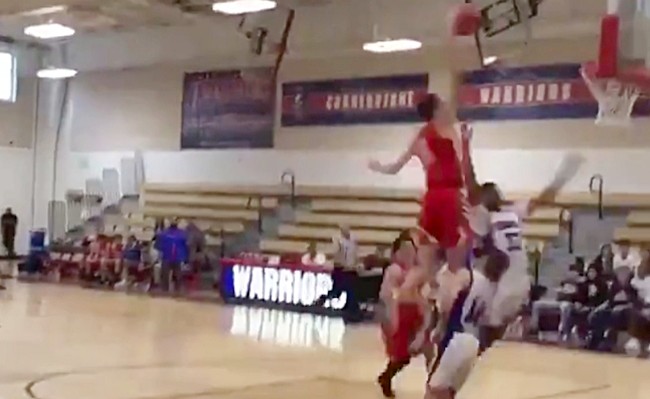
Every year the debate over the block/charge call in basketball is sparked over some flashpoint that gets the basketball world talking. This year it happened early in the season thanks to Brad Davidson, the Wisconsin player that drew four charges against NC State in a tight Badgers win and was extremely fired up about it.
This led to the debate over the merits of the charge and whether players should be rewarded for jumping in the way of opponents and falling to the floor at the first sign of contact. There are those that argue it’s part of playing defense and there is skill involved in beating the offensive player to their spot. Others (including me) think it’s a rule in need of overhauling because it rewards standing in the way with your hands down rather than playing defense — the best alternative, in my mind, is to ask refs to look harder at offensive fouls and who is initiating contact when players are actually trying to play defense and stop a shot.
Still, one thing that is often overlooked in the great charge debate is the danger of taking the charge, both in terms of physical harm and irreparable emotional scarring that it can create. To illustrate this point I’d like to take you to Texas high school basketball, where 6’9 Adriel Linares, aka Bonez, plays for Sunnybrook Christian Academy. Linares is a very athletic big man, who also happens to wear RecSpecs, which takes his aesthetic to a whole new and wonderful level.
Playing against Linares are often a number of high school kids that are nowhere near his level of athleticism or size. These kids have likely been taught that taking a charge is a great neutralizer of this physical disadvantage they are at, but at no point are they warned of the real life consequences of trying to take a charge against someone like Linares in the open floor. Here are the consequences, played out in real life, courtesy of the good folks at Overtime:
IT’S GOTTA BE THE GOGGLES 🥽 @theycallmebonez pic.twitter.com/gJKTbBRtgu
— Overtime (@overtime) December 5, 2018
Yes, that is a kid a good foot-and-a-half shorter than Linares stepping up confidently to take a charge on the break, only to take a knee to the face, get absolutely yammed on by a bespectacled giant in front of all of his peers, and get called for the blocking foul as the cherry on top of the shit sundae that was this moment for the young man who, likely for the best, remains anonymous to us.
Look at his immediate reaction. He’s stunned and looks over to his bench with a look of betrayal.
That’s because somewhere along the way he was told this is how you earn playing time. He was told by some adult who has been entrusted with his development as a basketball player and a young man that stepping up and taking a charge with your hands down by your side against someone with a 30-plus inch vertical on the break was the correct basketball play.
What he was not told is that the block/charge call is very difficult for referees due to the speed of the game and, often times, even if you may have beaten the player to the mark by a split second, you still might get hit with the foul. No one told him he would be embarrassed in front of his friends and schoolmates (and a lot of people on Twitter), likely having to hear about the time he got dunked on until, at the least, he leaves high school. No one told him the dangers of the charge because they’re being selfish by telling kids this is how to be selfless.
So, yes, the charge rule needs changing, but not just because it’s incredibly frustrating to watch people stand still and fall over. No, it needs to be changed to protect our youth ballers, because the reward of taking a charge is nowhere close to the risk.






